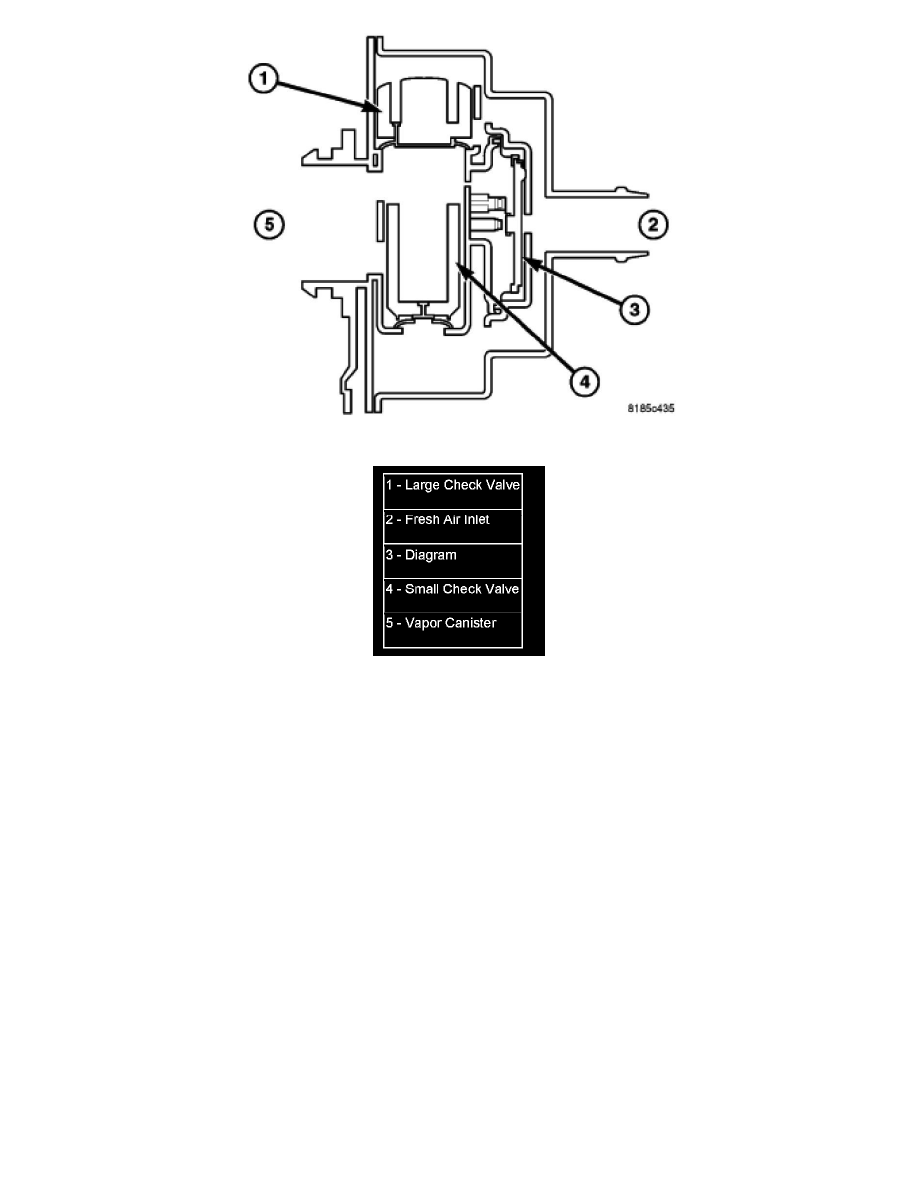Compass 4WD L4-2.4L VIN W (2007)

CUT AWAY OF MODULE
The ESIM (Evaporative System Integrity Monitor), while physically different than the NVLD system, performs the same basic function as the NVLD
does - controlling evaporative emissions. The ESIM has been simplified because the solenoid used on the NVLD is not used on the ESIM.
The ESIM consists of housing, two check valves (sometimes referred to as weights), a diaphragm, a switch and a cover. The larger check valve seals for
pressure and the smaller one seals for vacuum.
During refueling, pressure is built up in the evaporative system. When pressure reaches approximately 0.5 inches of water, the large check valve
unseats and pressure vents to the fresh air filter.
Conversely, when the system cools and the resulting vacuum lifts the small check valve from its seat and allows fresh air to enter the system and relieve
the vacuum condition. When a calibrated amount of vacuum is achieved in the evaporative system, the diaphragm is pulled inward, pushing on the spring
and closing the contacts.
The ESIM conducts test on the evaporative system as follows: An engine off, non-intrusive test for small leaks and an engine running, intrusive test for
medium/large leaks.
The ESIM weights seal the evap. system during engine off conditions. If the evap. system is sealed, it will be pulled into a vacuum, either due to the cool
down from operating temperature or diurnal ambient temperature cycling. When the vacuum in the system exceeds about 1 inch H20, the vacuum switch
closes. The switch closure sends a signal to the GPEC1. In order to pass the non-intrusive small leak test, the ESIM switch must close within a calculated
amount of time and within a specified amount of key-off events.
If the ESIM switch does not close as specified, the test is considered inconclusive and the intrusive engine running test will be run during the next key-on
cycle. This intrusive test will run on the next cold engine running condition.
Conditions for running the intrusive test are:
-
After the vehicle is started, the engine coolant temperature must be within 10° C (50° F) of ambient to indicate a cold start.
-
The fuel level must be between 12% and 88%.
